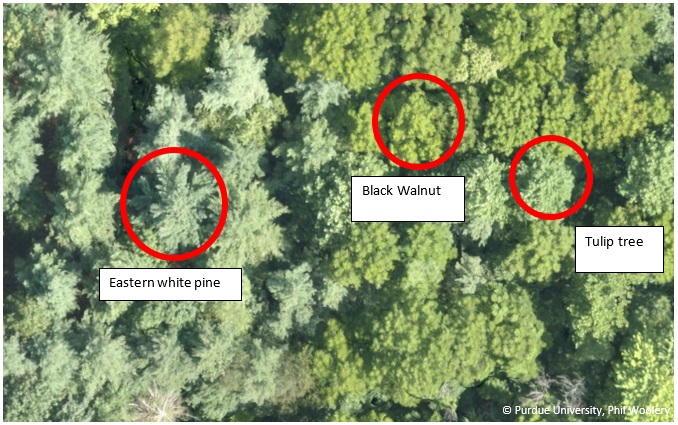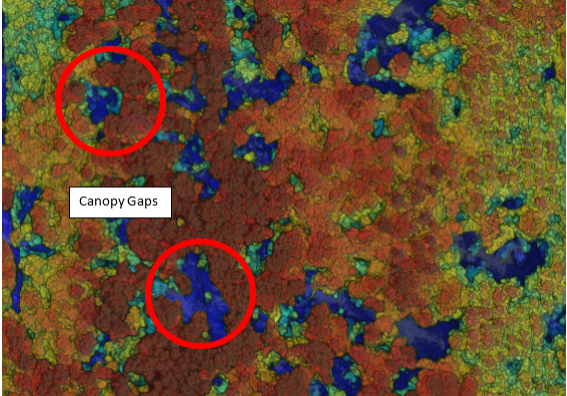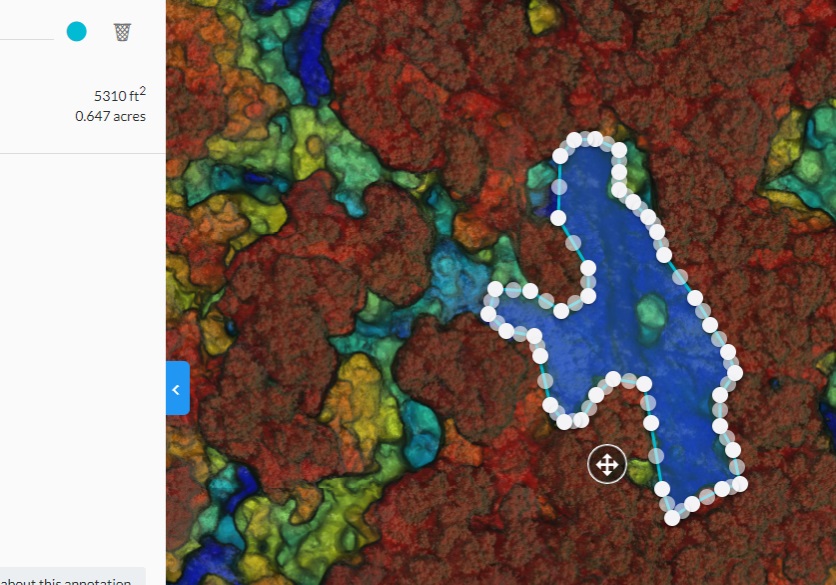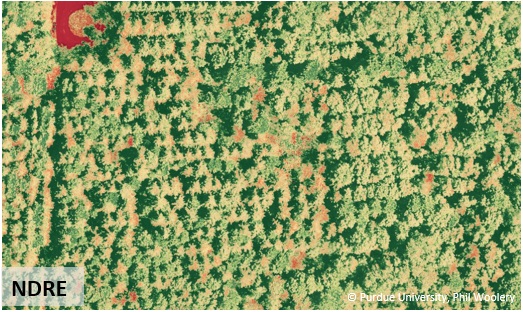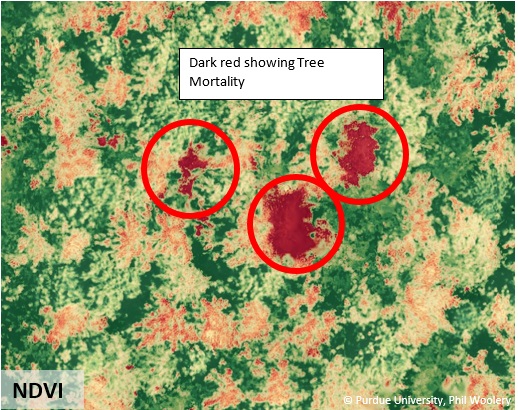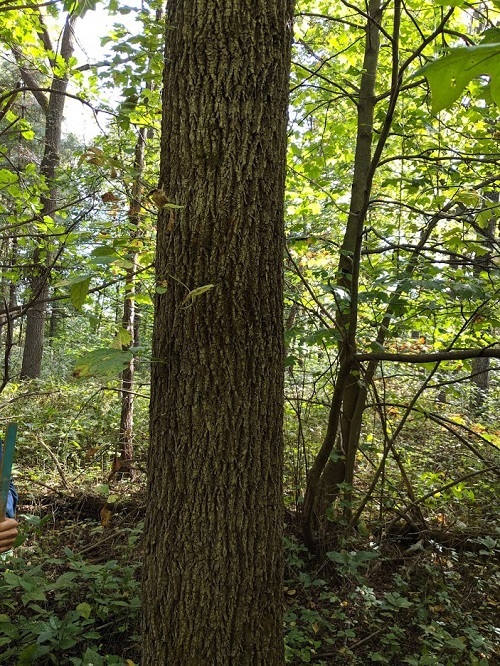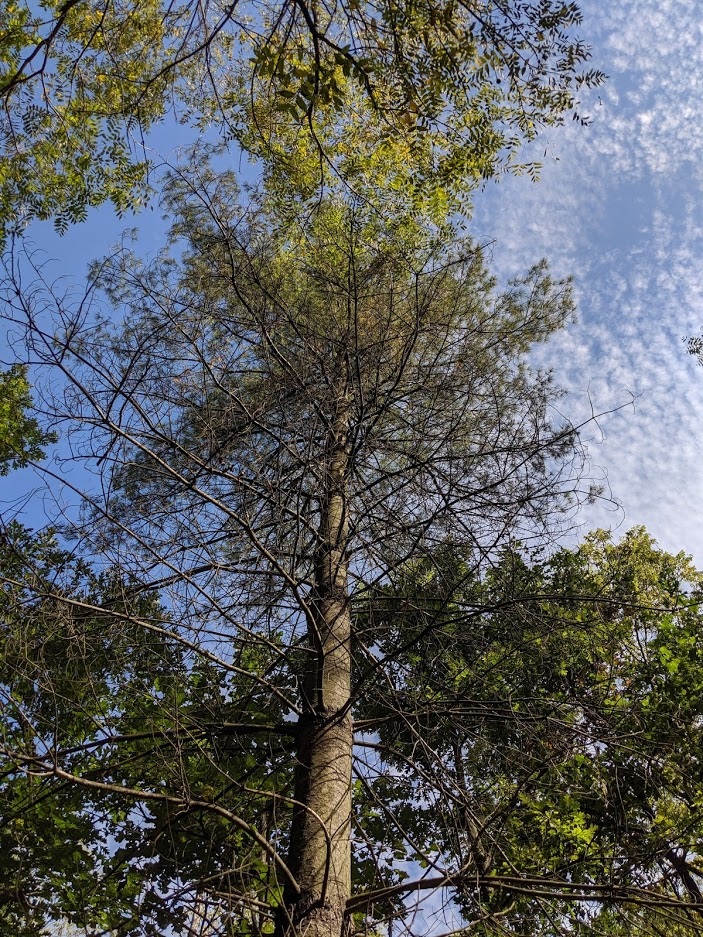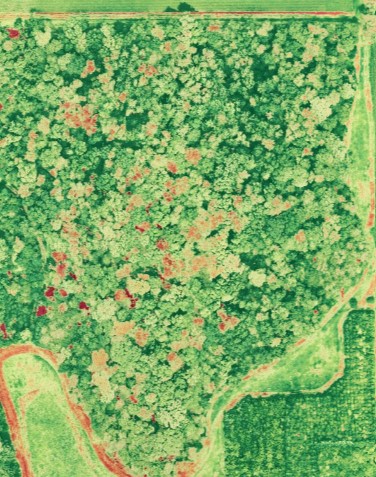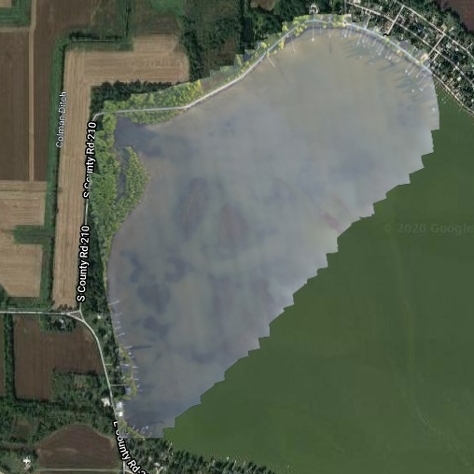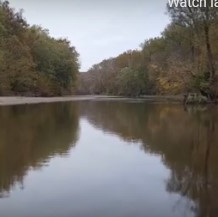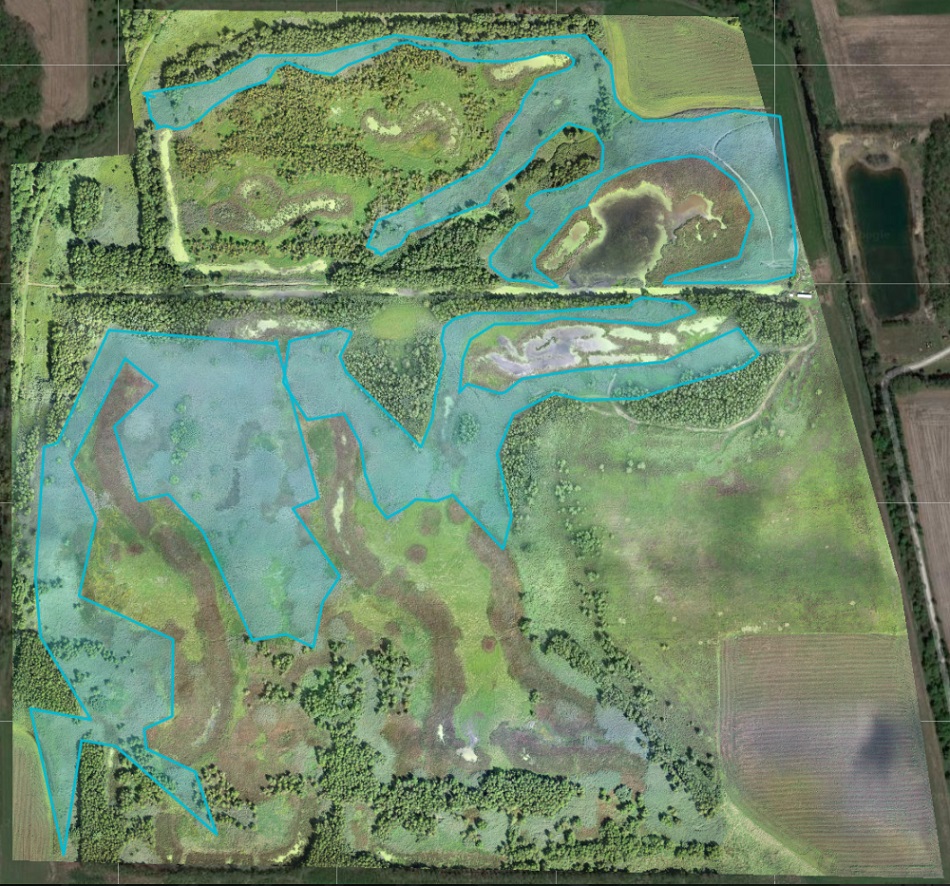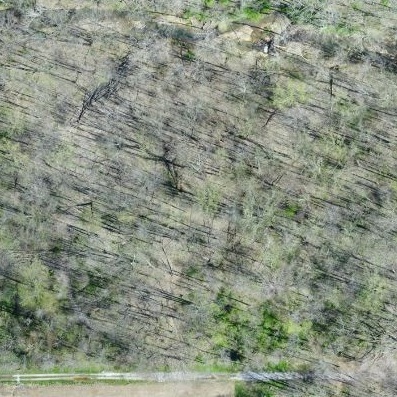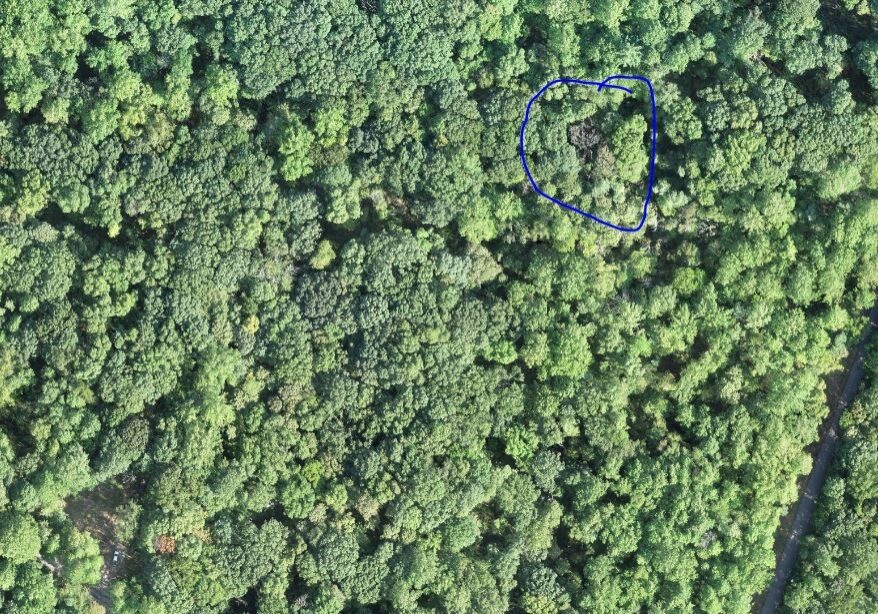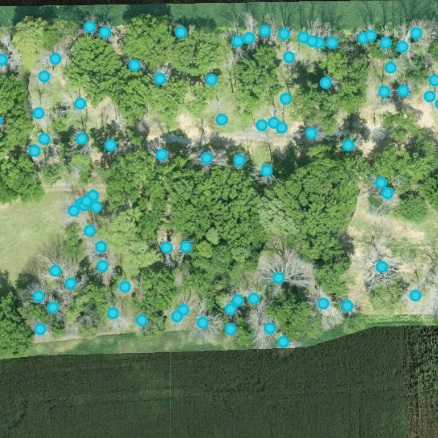Comprehensive forest report
Flown by Phil Woolery, Agriculture & Natural Resource Educator, Purdue Extension – Starke and Pulaski Counties
To explore UAV uses in forestry applications, several forests were flown over the course of 2019. One forest had documented history of planting and harvests and flown in two missions in August using a Phantom 4 Pro V2.0 with standard RGB and Sentera Double 4K cameras.
This stitched map was produced of the forest and subsequently analyzed. As you scroll down, you'll see RGB images allow identification of specific tree species upon color and texture.
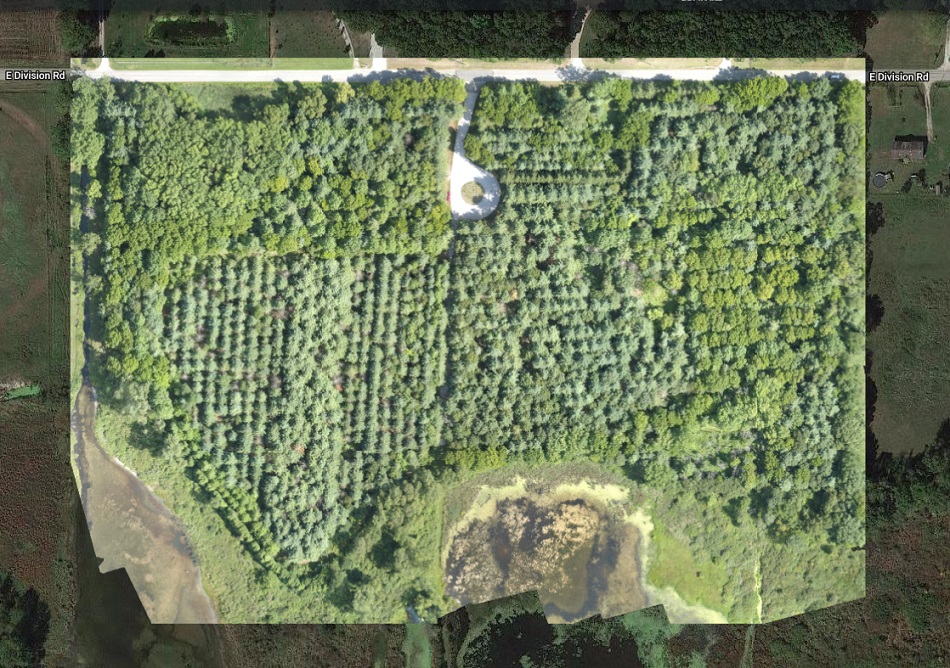
Tree stand and growing conditions
By using mapping tools such as the elevation tool in Drone Deply, we get values for total tree heights and location of young and short trees. We can also locate the best growing conditions.
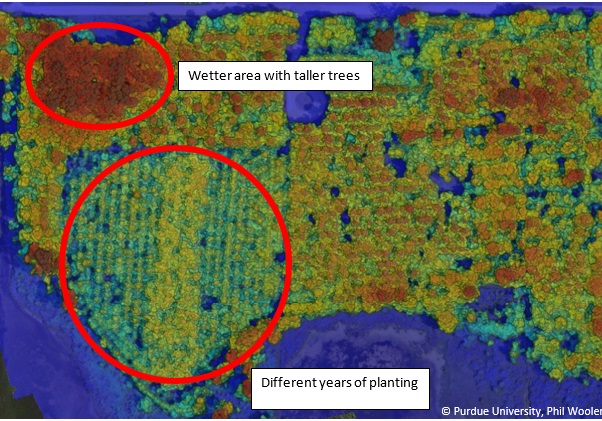
Ground truthing:
Several of the trees were checked by ground in September. Overall, it appears the NDVI is doing a good job pinpointing stress. Further investigation will evaluate potential disease spotting and susceptibility in tree breeding.
A black walnut was planted 33 years ago with a diameter of 14 inches – a growth rate of about a half inch per year. The crown looked large and healthy. This particular tree showed signs of stress in the NDVI map, but may be a result of growth pattern. Vigorous growing black walnut trees will continue growth late into the summer, and the new growth may be a result of the NDVI data.

